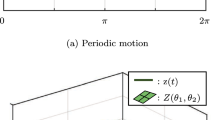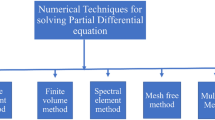Abstract
Aubry and Chartier introduced (1998) the concept of pseudo-symplecticness in order to construct explicit Runge-Kutta methods, which mimic symplectic ones. Of particular interest are methods of order (p, 2p), i.e., of orderp and pseudo-symplecticness order 2p, for which the growth of the global error remains linear. The aim of this note is to show that the lower bound for the minimal number of stages can be achieved forp=4 andp=5.
Similar content being viewed by others
References
A. Aubry and P. Chartier,Pseudo-symplectic Runge-Kutta methods, BIT, 38:3 (1998), pp. 439–461.
J. C. Butcher,The Numerical Analysis of Ordinary Differential Equations, Wiley, 1987.
E. Hairer, S. P. Nørsett, and G. Wanner,Solving Ordinary Differential Equations I. Nonstiff Problems, 2nd ed., Springer-Verlag, Berlin, 1993.
Author information
Authors and Affiliations
Additional information
Communicated by Syvert P. Nørsett.
Rights and permissions
About this article
Cite this article
Aubry, A., Chartier, P. A note on pseudo-symplectic Runge-Kutta methods. Bit Numer Math 38, 802–806 (1998). https://doi.org/10.1007/BF02510415
Received:
Revised:
Issue Date:
DOI: https://doi.org/10.1007/BF02510415




